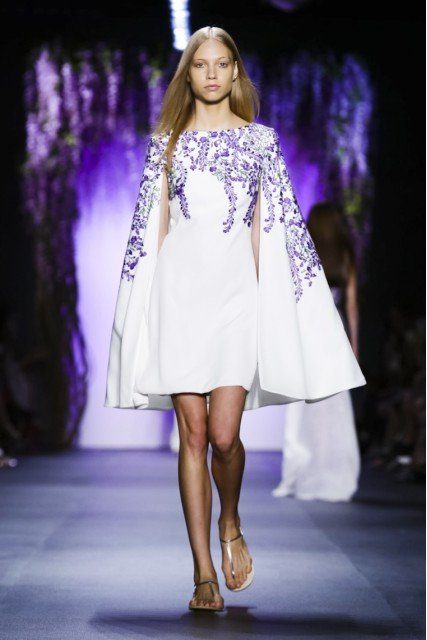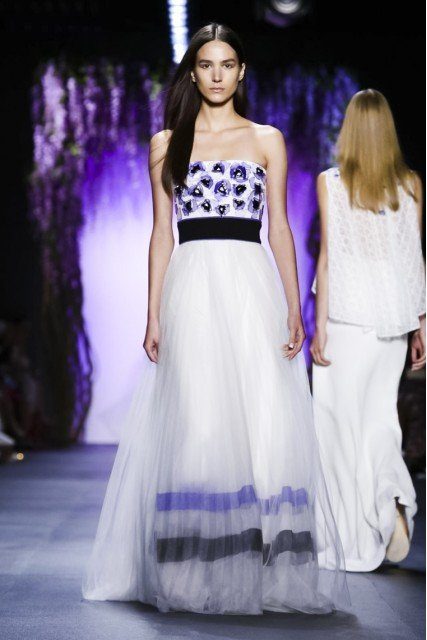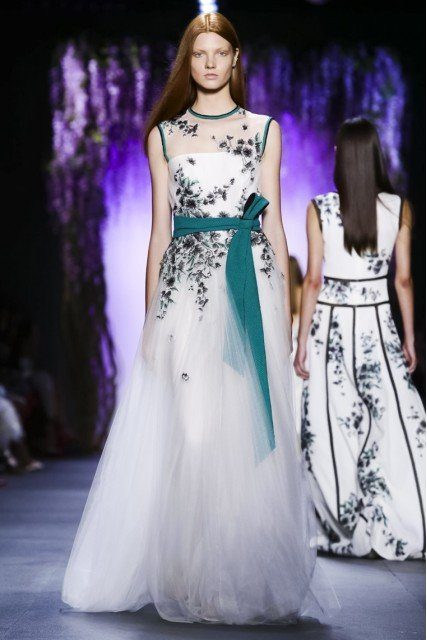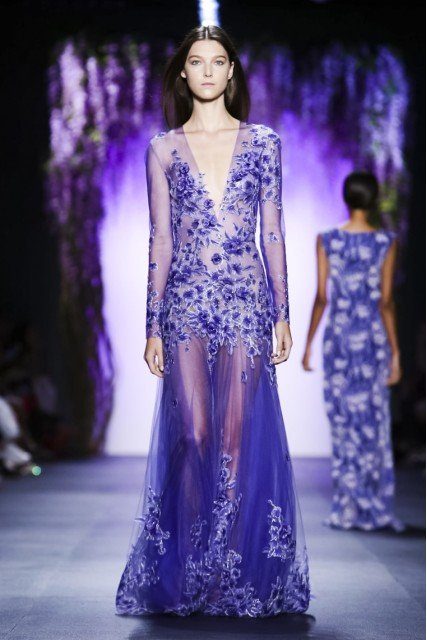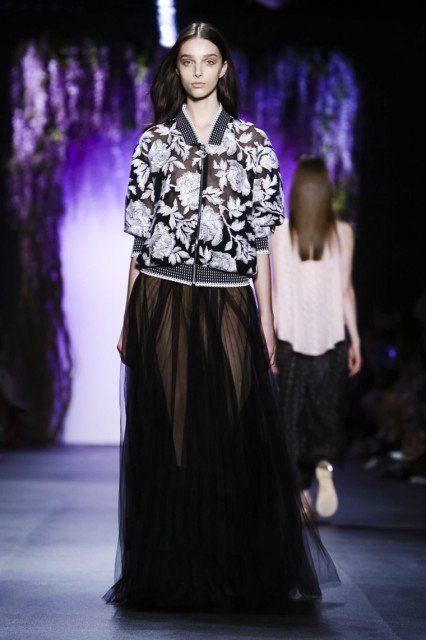As much as I love the moments sitting at a fashion show – soaking in all the exquisite collections and curating my thoughts on what we’ll be wearing next year – what I love, maybe even more, is the fashion industry itself and the business behind it. Everything that goes into each element of fashion week: the designer collections, embellishing each venue to create a true experience, not to mention the intensive amount of branding that has to accompany each element; it’s so fascinating to me. It took me a long time to decide which angle I wanted to cover fashion week from this year. You can google “[insert designer] Spring/Summer 2016 Collection” and see the looks on an abundant amount of websites. So, I want to give you something different – taking the runway and applying it to real life. Let’s see how this goes.
I’ll start this venture with the first runway show I attended this week, Tadashi Shoji, who filled the Dock at NYFW with zen on September 10th, debuting the Spring 2016 collection. Models floated down the runway in Sohijo’s signature feminine silhouettes. The Japanese garden theme was woven into nearly every piece of the collection with delicate flowers, embroidered detailing, and blossom motifs. Sheer skirts and plunging necklines added a balance of seductive elegance. “Japan’s Spring gardens, art, and architecture—all things that stemmed from his memories evoking a sense of nostalgia within” are what he found inspiration in for this collection he told WhoSays.
Sitting in the space, I could almost smell the faint scent of fresh rain that brings life to the garden lingering in the air. Gazing at the gentle purple color palette, I could picture strolling down a moss-worn pebbled path, perhaps through a flowering canopy of lavender blooms. From a flowers framed entryway to the graceful floral eyelets on the garments, every ingredient that went into the production of this experience was budding with cohesiveness.
In this edition of Runway to Real Life, we’re going to learn from Tadashi Shoji’s refined talent of generating cohesivity. From producing an event to styling your brand, or even growing your blog, creating a cohesive experience is a necessary element to connecting with your audience and luring them into your design.
Synergy is a term which describes the creation of a whole that is greater than the simple sum of its parts. It is defined as the increased output of a collective approach over that of an individual approach. When you create synergy via cohesiveness, the focus becomes the experience. Human beings thrive off of experiences. We want you to create something so mind-blowing that it take us out of real life and transports us to an emotional place of serenity, joy, or excitement. People invest their time, energy, and money into powerful experiences that they can be a part of.
The key to creating synergy through cohesiveness? Consistent ingredients – which are more important than staying within a niche and limiting your approach. Points A, B, C, and D, can vary as much as you want as long as you connect the paths between them with your consistent ingredients. When capitalized on, cohesiveness reduces limits while maintaining a consistent emotional connection for the audience. With Tadashi Sohijo’s collection, his consistent ingredients were floral details, a lilac color palette, and elegant, flowing silhouettes. This provided him with flexibility to use a variety of fabrics and push limits on structure – a bomber isn’t something you’d initially expect to find alongside of the other elements, but it worked seamlessly because it was synergic with the line up! This is the secret sauce to taking creative risks and ensuring their success!
But, there’s a catch. Whatever your consistent ingredients are, you need to live, eat, breathe, and sweat them. According to Sarah Bellman at WhoSays, the designer himself sat calmly on a stool in the corner, overlooking the madness with gentle eyes as he was surrounded by his stressed production team and confused members of the press. You can’t have a zen, calming collection if you’re running around like a mad man backstage. I’m sure it would have still been beautiful, but there’s no doubt in my mind that Tadashi’s own cool and collected persona was a huge factor in successfully producing the serene atmosphere of the show.
